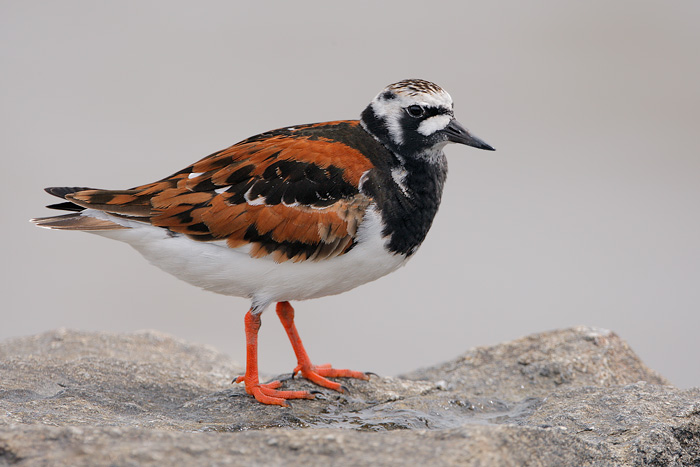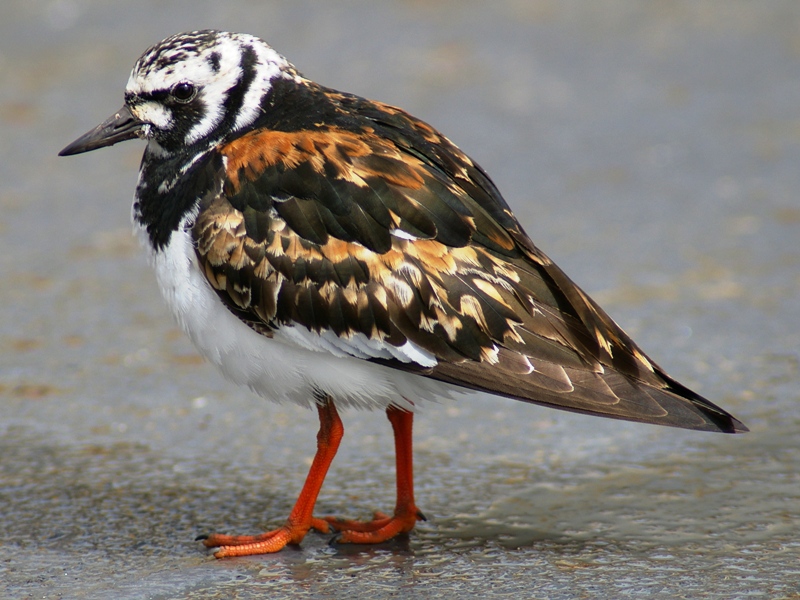
Arenaria interpres
SUBFAMILY
Arenariinae
TAXONOMY
Tringa interpres Linnaeus, 1758, Gotland, Sweden. Two subspecies.
OTHER COMMON NAMES
French: Tournepierre а collier; German: Steinwдlzer; Spanish:
Vuelvepiedras Comъn.
PHYSICAL CHARACTERISTICS
8.3–10.2 in (21–26 cm); 0.18–0.42 lb (84–190 g). Black and
white head, neck, throat, and chest; rufous-chestnut upperparts
with black-brown patches; white underparts. Female has more
streaking on crown, a brownish nape, duller upperparts, and
pale flecks on the breast patch.
DISTRIBUTION
A. i. interpres: northeast Canadian Arctic, Greenland, north
Eurasia and northwest Alaska, wintering western Europe,
Africa, South Asia, Australasia, South Pacific islands, and Pacific
coast of North America; A. i. morinella: northeast Alaska
and Arctic Canada; winters from South Carolina and Gulf of
Mexico to Chile and north Argentina.
HABITAT
Breeds on stony coastal plains, marshy slopes and flats, and
tundra; winters on rocky and stony coasts, sandy beaches with
seaweed, and exposed reefs.
BEHAVIOR
Relatively tame; often in flocks.
FEEDING ECOLOGY AND DIET
Gleans insects, crustaceans, mollusks, worms, echinoderms,
fish, and carrion; sometimes birds’ eggs. Flips over stones,
shells, and seaweed with bill, catching prey thus exposed;
pushes large objects with breast; scavenges frequently.
REPRODUCTIVE BIOLOGY
Monogamous and solitary. Lays May–July. Nests are open or
concealed in hummocky vegetation; clutch contains two to four
eggs; incubation 22–24 days; fledges at 19–21 days.
CONSERVATION STATUS
No significant decreases in numbers reported.
SIGNIFICANCE TO HUMANS
None known.
Photo Gallery of - Ruddy turnstone




 Animalia Life
Animalia Life